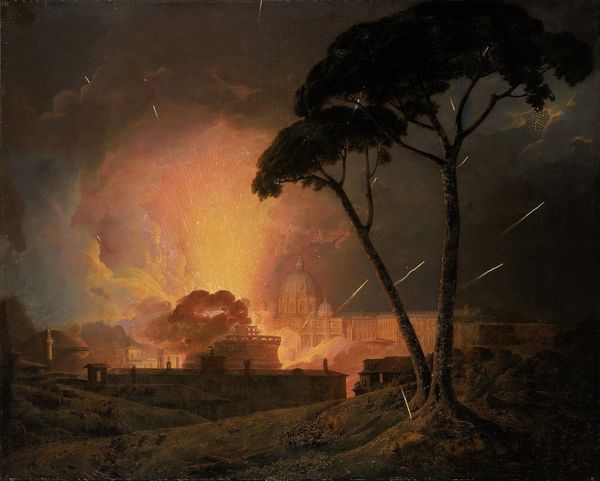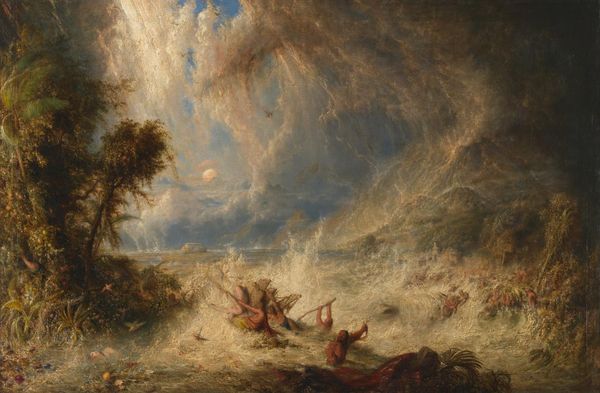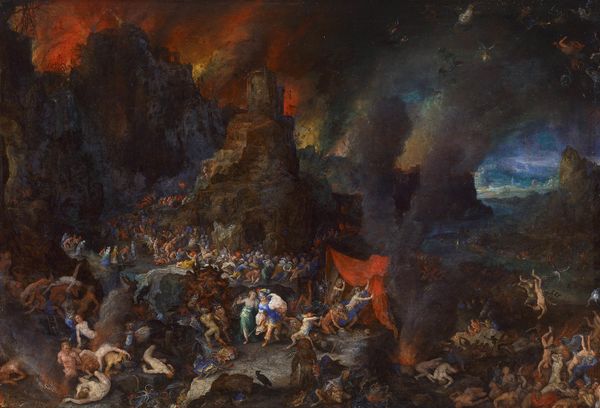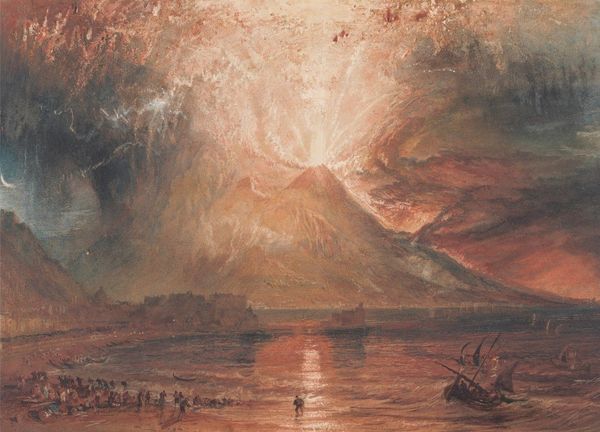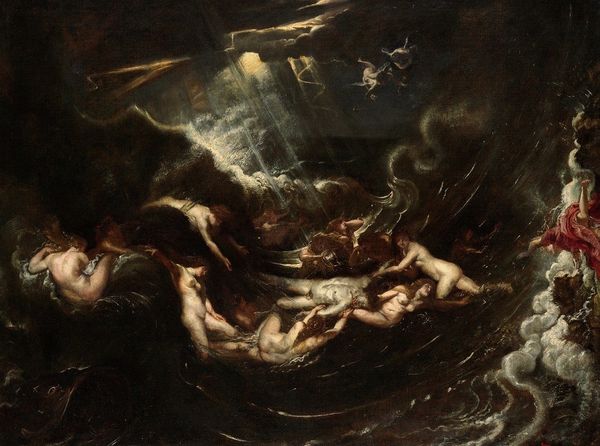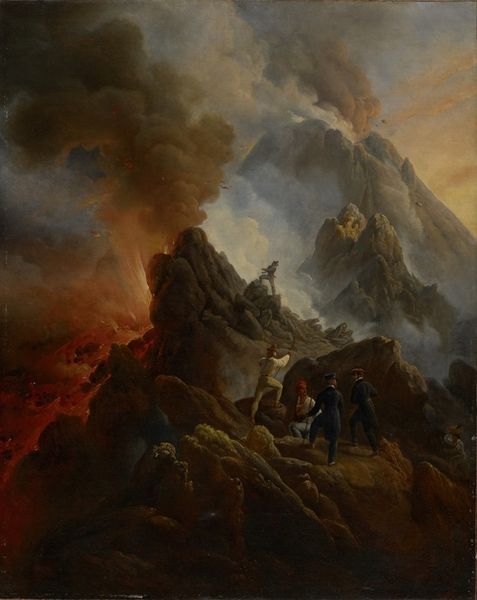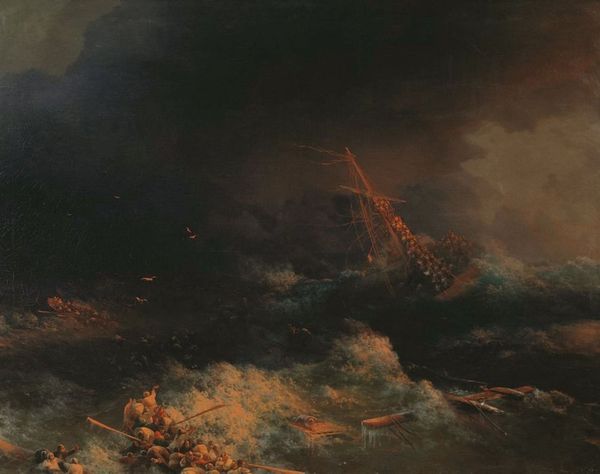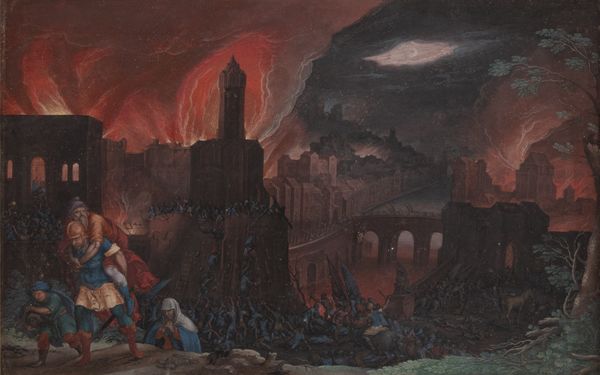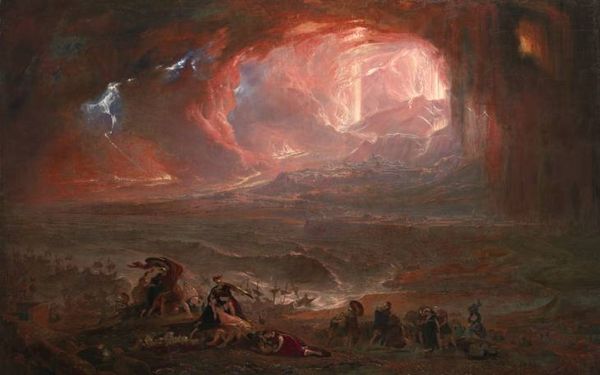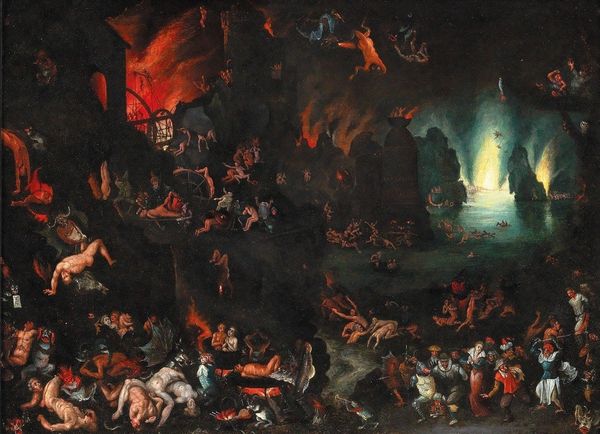
Copyright: Public domain
Curator: Look at the sublime drama captured in James Hamilton's 1864 oil painting, "The Last Days of Pompeii". The devastation almost feels tactile. What are your initial thoughts? Editor: A visceral, almost apocalyptic vision. The dark palette punctuated by that intense, theatrical light focuses attention. How do you interpret the relationship between light and darkness? Curator: For Hamilton, it's the interplay between the destructive force of nature and humanity’s doomed hubris, brought sharply into focus by industrialization. One can see the materiality in those swirling dark oils, hinting at the very soot and ash engulfing Pompeii, as it might have related to, say, 19th-century mining communities. Editor: I'm struck by the composition: that stark column rising towards the heavens. The way the buildings huddle in the shadows gives us that sense of the Romantic ruin and a fascination with historical narrative. Curator: True, and let’s remember, Hamilton made his name from maritime painting, yet he applied those painterly techniques to this reconstruction of societal and geological disaster. This also begs the question about the Victorian preoccupation with classical civilization and the excavation of Pompeii. It points to the wider networks of archaeology and the production of knowledge. Editor: It's certainly effective; one could decode each crumbling element like words in a grand, terrible sentence. Yet the scene is shrouded, so one wonders how accessible or opaque those “words” really are. The scale creates that unsettling feeling. Curator: Indeed. The act of creation, its accessibility through historical record, and ultimately, its destruction. What's left, editor, is a potent mixture of historical reference, human labor and the enduring appeal of catastrophic sublime. Editor: Ultimately, Hamilton achieves the goal in provoking an intensely felt emotional response, even from across the ages. The somber elegance holds within its dramatic architecture an important story of the past.
Comments
No comments
Be the first to comment and join the conversation on the ultimate creative platform.
